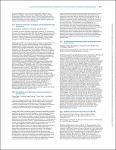An evolutionary framework to guide the hunt for human dsDNA viruses
Aghebatrafat, A.
Merkel, K.
Leendertz, F.
Krüger, D. H.
Calvignac-Spencer, S.
It is becoming increasingly obvious that we only know a fraction of the human virome. The development of next-generation sequencing (NGS) technologies has dramatically increased our ability to hunt viruses. Yet, the small genomes and low copy numbers characteristic of most viruses make undirected (shotgun) hunts a relatively inefficient strategy. Here, we propose to speed-up the rate of double-stranded DNA (dsDNA) virus discovery by combining NGS with evolutionary thinking. dsDNA viruses are thought to have co-diverged with their hosts. As this applies to the hominine lineages (gorillas, humans, chimpanzees, and bonobos), it is theoretically possible to estimate the phylogenetic position of cryptic human viruses by identifying co-divergent viral lineages infecting non-human hominines. Where these lineages do not comprise a human-infecting counterpart, a yet-unknown human virus may be hiding. The first phase of this project will consist in the high-throughput characterization of dsDNA viruses (herpesviruses, papillomaviruses, and polyomaviruses) infecting wild gorillas, chimpanzees, and bonobos. For this, we will use an exhaustive collection of fecal samples (in terms of hominine species/sub-species diversity) and apply a discovery strategy combining in-solution capture and NGS. This strategy has been developed in the ancient DNA field but has a very broad applicability; it will constitute a nice addendum to the institute technical portfolio. Thanks to the massive amount of information collected, we will be able to reconstruct the evolutionary history of many dsDNA virus lineages and to identify those where a human virus would be expected but is still unknown. This will pave the way to the second phase of the project which will consist in a pre-oriented dsDNA human virus hunt based on the use of specific PCR systems implemented in multiplex. We expect that this project will generate an unprecedented amount of data on the processes at play along dsDNA virus evolution (co-divergence versus cross-species transmission), help determine the directionality, frequency, and timing of cross-species transmission events between hominines and unveil the existence of yet-to-be-discovered human viruses.
Dateien zu dieser Publikation

